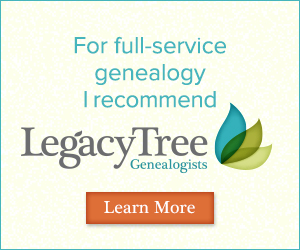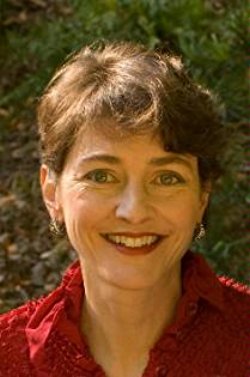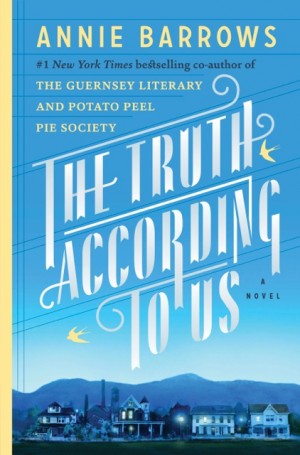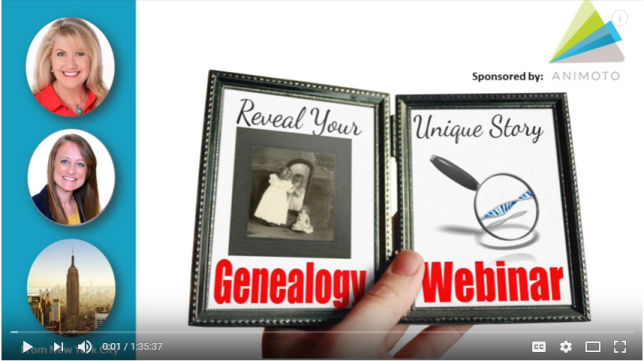Episode 200
The Genealogy Gems Podcast
Episode 200
with Lisa Louise Cooke

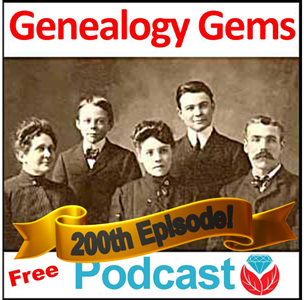
Listen Now
It’s finally here – the 200th episode of the free Genealogy Gems podcast, also celebrating its 10th year.
In this special episode, Lisa invites Professor Mark Auslander to share his discoveries about a mother and young daughter separated by slavery. Learn how he pieced together their story from a poignant family heirloom found at a flea market.
Throughout the episode, you will hear from several listeners, past podcast guests, Gems staffers and supporters in the genealogy industry with congratulations, memories, stories, and favorite Gems tips. Listen for the DNA success story of an adoptee who never gave up his search for his biological roots.
Thanks to all listeners and friends who sent congratulations! Among them are:
Allison Dolan, Publisher, Family Tree Magazine. She mentioned the Family Tree Magazine Podcast
Bruce Buzbee, RootsMagic family history software
DearMYRTLE, veteran online genealogy educator and author of the award-winning DearMYRTLE blog. She mentioned Lisa’s Family History: Genealogy Made Easy podcast; her all-day seminars at societies; and classes at her booth during conferences.
Geoff Rasmussen, Legacy Family Tree webinars, and author of Kindred Voices: Listening for Our Ancestors
Jim Shaughnessy, Findmypast.com
Mary Tedesco, host and genealogist on PBS’ Genealogy Roadshow, founder of Origins Italy, co-author of Tracing Your Italian Ancestors and a guest on Genealogy Gems Podcast episode #175, talking about Italian research and her work on Genealogy Roadshow
Steve Luxenberg, author of Annie’s Ghosts: A Journey into a Family Secret. Listen to Lisa’s conversation with him in The Genealogy Gems Podcast episodes 120 and 121. This book and interview planted the seed for the Genealogy Gems Book Club!
Yev Pusin, Social Marketing Marketer, Backblaze online computer backup service, also celebrating its 10th anniversary
MAILBOX: LISA AND SUNNY

The following were mentioned in listener emails and voicemails:
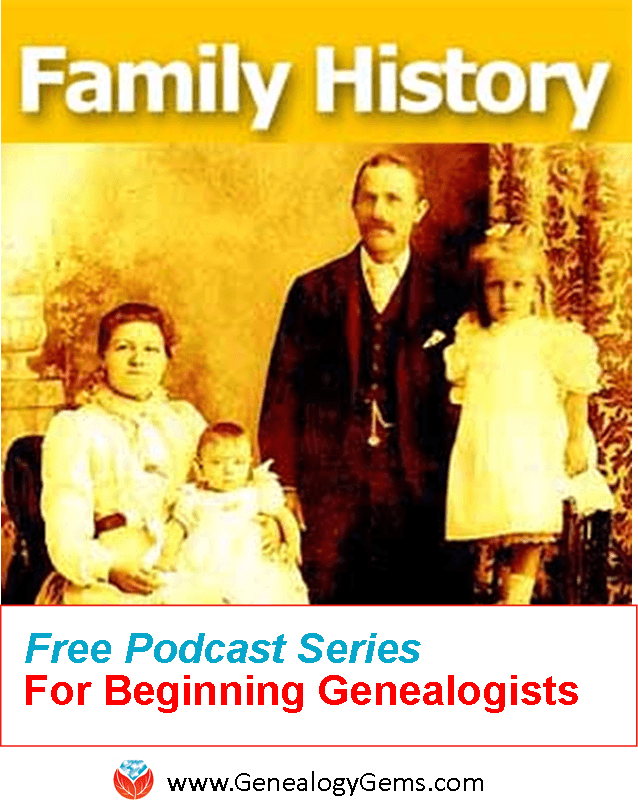
Family History: Genealogy Made Easy Podcast by Lisa Louise Cooke. This is a FREE step-by-step series for beginning genealogists?and more experienced ones who want to brush up or learn something new. One listener mentioned the series on naturalization records in episodes 29-31.
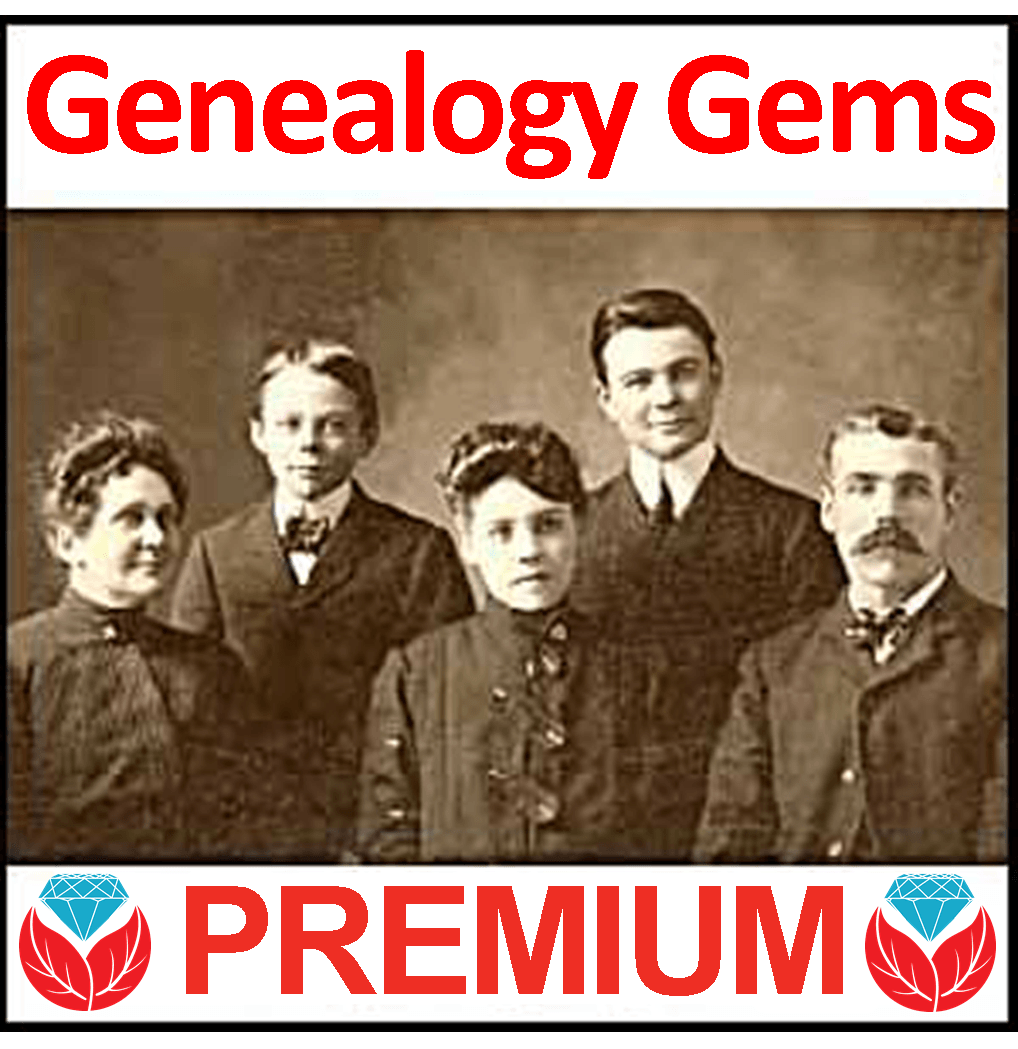
The Genealogy Gems Premium Podcast by Lisa Louise Cooke. Monthly episodes?and the full archive of past episodes?are available to Genealogy Gems Premium website subscribers. This podcast takes what you love about the free Genealogy Gems podcast and goes deeper, broader and more exclusively into topics of interest for U.S. and international audiences.
The Genealogy Gems app is FREE in Google Play and is only $2.99 for Windows, iPhone and iPad users.
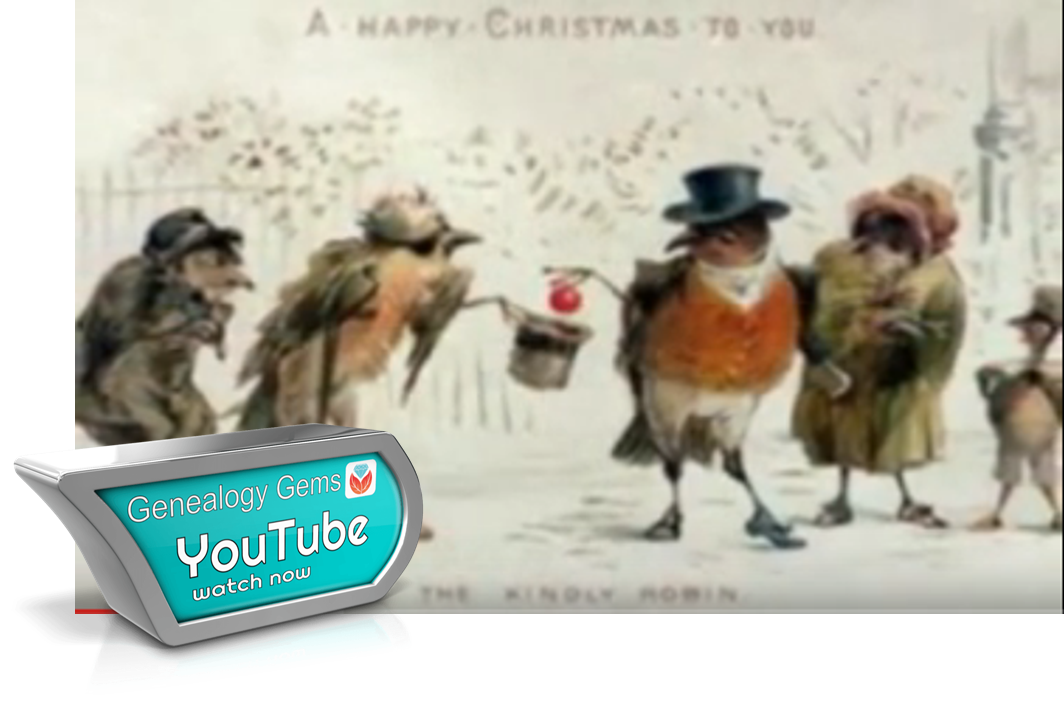

Using Evernote to organize your family history research: free tips and great resources to help you make the most of this free app (or its Premium version) to keep all your genealogy research notes and links organized and at your fingertips.
Netvibes computer dashboard tool and mobile apps for genealogy
Computer backup story from Kathy: “I was robbed! They took the computer AND the backup drive!”
Keep your family history research, photos, tree software files, videos and all other computer files safely backed up with Backblaze, the official cloud-based computer backup system for Lisa Louise Cooke’s Genealogy Gems. Learn more at http://www.backblaze.com/Lisa.
DNA WITH YOUR DNA GUIDE DIAHAN SOUTHARD
Diahan’s series of how-to videos, available to Gems fans for a special price.
Diahan’s series of DNA quick guides, available in print or as digital downloads

Lisa Louise Cooke uses and recommends RootsMagic family history software. From within RootsMagic, you can search WebHints on FamilySearch.org, Findmypast.com and MyHeritage.com. Soon RootsMagic will also be able to search records and even sync your tree with Ancestry.com, too.
MyHeritage.com is the place to make connections with relatives overseas, particularly with those who may still live in your buy medicine online worldwide ancestral homeland. Click here to see what MyHeritage can do for you: it’s free to get started.
INTERVIEW: MARK AUSLANDER
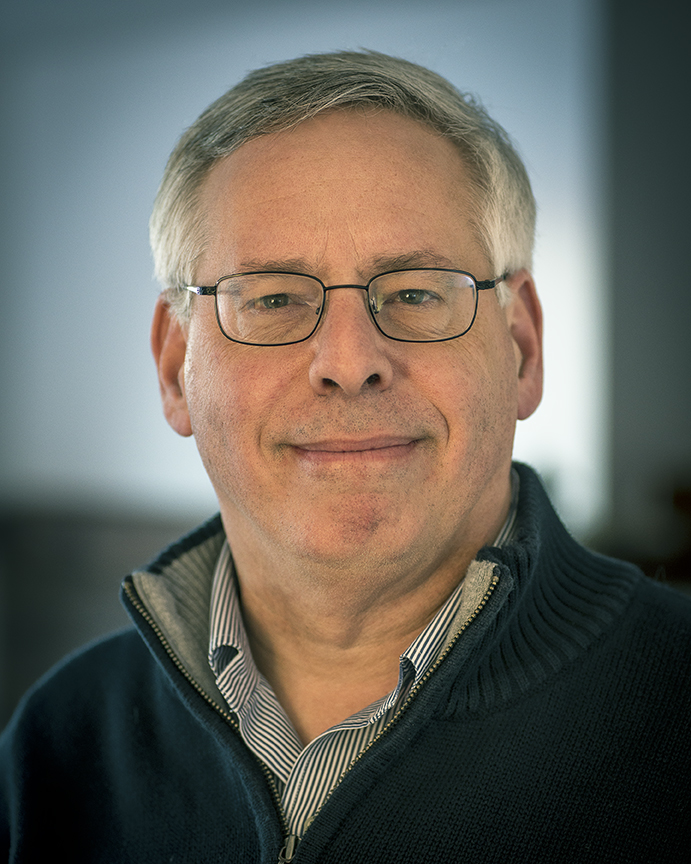
Mark Auslander is an Associate Professor and Museum Director at Central Washington University in Ellensburg, WA and the author of The Accidental Slaveowner: Revisiting a Myth of Race and Finding An American Family.
“Slave Mother’s Love in 56 Carefully-Stitched Words”
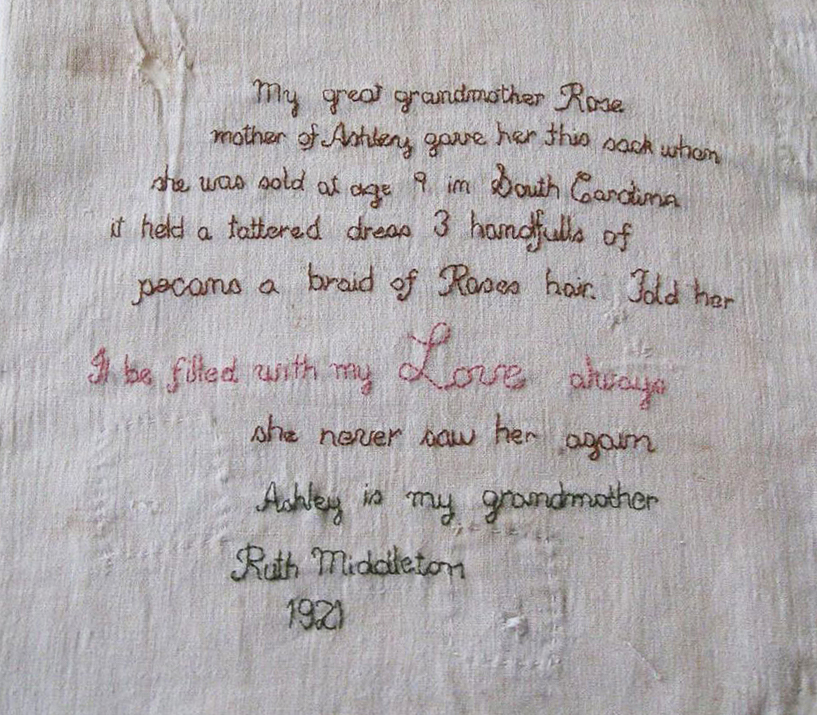
Mark’s path to the probable family of this artifact used these techniques:
Look closely at all clues from the artifact: the fabric, stitching, colors, facts conveyed in the text, etc. Look at both the historical clues and the artistic or symbolic aspects of it.
Create a profile for the people mentioned based on what is known. Probable age for Ruth Middleton in 1921, etc.
Use contextual and social history clues to hypothesize a scenario. The inclusion of “South Carolina” hints that the seamstress didn’t live in South Carolina, so he guessed that she was part of the Great Migration of millions of African-Americans in the early 1900s who headed from the rural South to the industrial Midwest and other urban cities.
Take advantage of unusual clues. Rose is a common name for an enslaved woman, but not Ashley.
Look through all available records. Possible census listings for Ruth Middleton in 1920 didn’t seem likely candidates. He dug through marriage records for Northern states until he found a woman named Ruth who married a man named Middleton who fit the profile he’d created.
Use specialized sources for African-American research, especially records created by and about the slaveholder that relate to the holding, sale or transfer of enslaved people.
Mark says that some researchers describe the search process as “guided by some force larger than yourself that keeps you going through those endless hours in microfilm rooms or online. But it does connect us all in very profound ways to those who came before and those who come after?.Through genealogical work, in a sense we can triumph over death itself and we can move back and forth in time in the most remarkable way.”

Coming up next month in The Genealogy Gems Podcast episode 201: An interview with Angela Walton-Raji on finding African-American ancestors. She shares tons of resources! Even if you haven’t found any African-Americans on your family tree, the challenges and rewards of African-American genealogical research are both fascinating and moving to learn about.
Legacy Tree Genealogists provides expert genealogy research service that works with your research goals, budget and schedule. The Legacy Tree Discovery package offers 3.5 hours of preliminary analysis and research recommendations: a great choice if you’ve hit a brick wall in your research and could use some expert guidance. GENEALOGY GEMS EXCLUSIVE OFFER: Go to www.legacytree.com/genealogygems and use coupon code GEMS100 to save $100 off your purchase of research services (expires 4/30/17).
CONVERSATIONS WITH MORE GEMS
Amie Tennant, Gems Content Contributor: see the Genealogy Gems blog
Lacey Cooke, Gems Service Manager
Vienna Thomas, Associate Producer and Audio Editor; she mentioned a favorite Genealogy Gems Book Club title and interview were with Chris Cleave, author of Everyone Brave is Forgiven
GENEALOGY GEMS BOOK CLUB

The Truth According to Us by internationally bestselling author Annie Barrows
It’s the summer of 1938, and wealthy young socialite Miss Layla Beck is now on the dole as a WPA worker, assigned to write a history of the small town of Macedonia, West Virginia. As she starts asking questions about the town’s past, she is drawn into the secrets of the family she’s staying with?and drawn to a certain handsome member of that family. She and two of those family members take turns narrating the story from different points of view, exploring the theme that historical truth, like beauty, is often in the eye of the beholder.
Click here to read an introduction to using WPA records for genealogy.
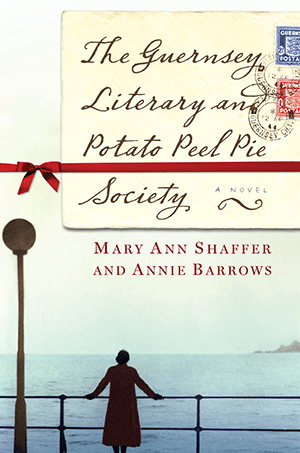
Annie Barrows is also the co-author of The Guernsey Literary and Potato Peel Pie Society. This novel takes place after World War II in a London recovering from the Blitz and an island recovering from German occupation. At the heart of Guernsey is an unlikely love story and the inspiring tale of a community that took care of each other in their darkest days with humor, compassion and good books.
Click here to see more Genealogy Gems Book Club selections and how you can listen to Lisa’s upcoming exclusive conversation with author Annie Barrows about The Truth According to Us.
Music from this episode is from the band Venice
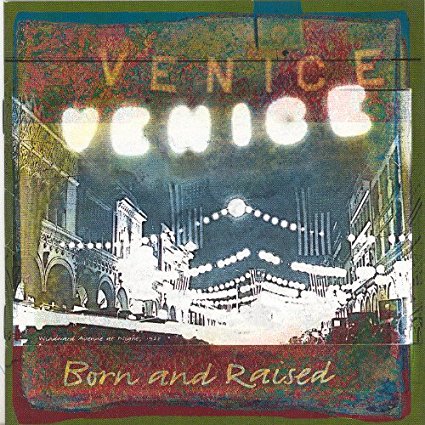
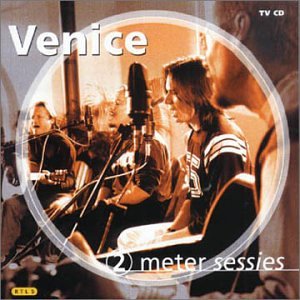
The song played at the opening was “We’re Still Here,” from the album Born and Raised.
The song played at the closing was “The Family Tree” from the album 2 Meter Sessies; click to purchase the album or download the song as a single.
Subscribe to the Genealogy Gems newsletter to receive a free weekly e-mail newsletter, with tips, inspiration and money-saving deals.
Disclosure: This article contains affiliate links and Genealogy Gems will be compensated if you make a purchase after clicking on these links (at no additional cost to you). Thank you for supporting Genealogy Gems!
Jewish Genealogy Research
- unique features that JewishGen.org has to offer
- the best regional websites
- what you need to do before you dig into these websites
You can watch here, or click “Watch on YouTube” to watch at the Genealogy Gems YouTube channel where you can also view the live chat by signing into YouTube with a free Google account.
Episode 57 Show Notes
Interview Transcript
Lisa Louise Cooke: When I think of Jewish genealogy, immediately my mind goes to JewishGen.org, and I was hoping you could start us off with an overview of that. I know that you’re involved with them and boy, do they have a lot to offer!
Ellen Kowitt: JewishGen is really the premier main source for Jewish records on the internet today.
It’s run as a non-profit and it’s actually a part of a museum on the lower side of Manhattan called the Museum of Jewish Living Heritage. It’s run by a professional executive director, Abraham Grohl, but then there are thousands of volunteers that participate as research division directors, who help to identify records, index records, and translate records because language is a big issue in Jewish genealogy.
They’ve developed some really great data sets that can be searched for free by anyone. There is no charge to search JewishGen. Similar to FamilySearch, they ask that you register for a username and a password, but they don’t sell your name and it’s not going to go anywhere past accessing that website.
JewishGen
They have different tools they have developed that are unique to searching Jewish records.
I think there are a lot of entry points into JewishGen. For a novice, particularly beginners who have not done a lot of research anywhere on the internet, it can be a little overwhelming. They have a unified search, which combines the data sets from hundreds of records into one search function, because you can search each of these data sets separately. But if you’re just browsing and curious, and just want to throw your names in, the unified search is a great place to start.
Something that is really exciting about it is that they’ve had these special algorithms developed that are unique to Jewish names and Jewish languages. I’ll mention the Jewish languages in a minute, but it’s similar to the National Archives in the United States, which developed what we call the Soundex, which is an alpha-numeric code assigned to your name. It helps you navigate other spellings to your name that are similar, but maybe your family didn’t spell it that way, but it could be found in a record that way. The American Soundex doesn’t always work on Jewish or mostly Eastern-European names, so these special Soundexes were developed on JewishGen that are now used throughout the Jewish genealogy world on other databases as well. One is called the Daitch–Mokotoff. Another is called the Beider-Morse, but JewishGen doesn’t call them that. When you go in, it’s blind to you.
You’ll put your name or your town name into the search engine and there is a form with fields that you can populate. It doesn’t matter if you’re spelling the names of your given name, your surname, or your town name correctly, because you’re going to be able to pick a couple of different ways to search in a drop-down menu.
The first one will be called “Sounds Like,” the second is “Phonetically Like,” and then it goes into “Starts With,” “Is Exactly,” “Fuzzy Match,” “Fuzzier Match,” and “Fuzziest Match.” My recommendation is always search on “Sounds Like” and “Phonetically Like” because those are Daitch–Mokotoff and Beider-Morse Jewish algorithms for Jewish names and places. So that’s really, really helpful.
Many times people coming to Jewish genealogy are just hung up on names, where they come from, and figuring out an immigrant’s place of origin. Because, think about it: nobody spoke English in the Russian Empire or the Austro-Hungarian Empire, which is where a majority of Jews came from after 1880. So, they’re speaking languages like German and Russian, Lithuanian and Polish, and even Yiddish, which is linguistically more like German although it is written with Hebrew letters.
These immigrants come to American ports and there could be an immigrant from another part of the world with a different kind of accent, like an Irishman. So, an Irishman in America listening to a Yiddish speaker from Russia – of course they’re going to butcher spelling the names. It’s just par for the course.
People can’t get hung up on the spellings of Jewish names, particularly the surnames and the towns of origin where they are emigrating from. Of course, those towns are important to narrow down and understand where they were, because that’s where you’re going to look for the records.
JewishGen’s Communities Database
That’s a second point about JewishGen that’s so helpful. They have a Communities Database, and that lists over 6,000 places where Jews mostly lived in the largest populations around Eastern Europe. In many of those places, Jews don’t live there anymore, but they will outline for you in different time periods where the records are or where they were.
We always refer to Jews coming from Russia because we see that on passenger manifests or census records. But a lot of times when you see Russia as a place of origin for a Jewish family, if they came before 1917, that was Russian Empire. The Russian Empire doesn’t exist anymore, and what was the Russian Empire pre-1975 is not Russia-proper today.
There are a lot of countries where your family could have come from, including Poland, because part of Poland was in the Russian Empire. Your family might actually be from Lithuania, Latvia, Belarus, or Ukraine, or even some places in the south that don’t exist anymore. There used to be an area referred to as Bessarabia, and another one, Bukovina. These don’t exist anymore. Even Prussia, when you talk about the German Jews who came over, and this is true for non-Jews, too. There is no Prussian Empire anymore, and what was the Prussian Empire is now largely Poland, parts of Russia, and Germany of course. But it’s misleading that if your family spoke German and said that were Prussian, that they were German the way we think of Germany today. A lot of Jews came from Prussia, so that’s why I mention it.
Those are the key things about JewishGen. It helps with you the name complications and determining what other spellings there might be in records. It also helps you with locating these towns and what the administrative districts today would be.
How to Get Started in Jewish Genealogy Research
If you’re researching a Jewish family, it’s no different than any other American family, if you’re starting in America. You start with the civil records, the vital records, the census records, and the passenger manifests. None of these American records are divided by faith or ethnic group. So, a Jewish person, or if you’re researching a Jewish branch, should be starting the same way as any other American research. Start with yourself, work backwards, go through and exhaust all of the American records that you can, which will help you determine what those original names and place they came from are. That’s where JewishGen really helps you. It’s kind of like a 102 class. You have to do the American 101 records, and then when you’ve exhausted all of that, you jump to the Jewish records, which are largely available through JewishGen.
JewishGen Networking
And the big point about JewishGen is the networking, because there’s this huge discussion group. They are now on Facebook with a group.
They have something called the JewishGen Family Finder, where you can register the names you’re looking for and/or the towns. Likewise, you can search to see whom else is researching the same names and towns that you are.
Through the messaging on JewishGen, you can get in touch with them and say, “Hey this is my story. Can I see your tree?” or “Do you have any family photos?” or “Have you had any success finding records for the little town in the middle of Ukraine?” Or even, “Have you hired a researcher that was helpful in pushing your research back in this particular archive in Lithuania?” It’s a fantastic way to find people researching the same obscure, small areas of the world that you are.
Lisa Louise Cooke – That’s an amazing resource, and you’re so right that we still have to follow the basic genealogy methodology. We still need to go through those records here. It’s tempting – I know people will say, “Well I know they were Jewish” so they’ll want to jump into that, and yet you miss so many clues that would probably come in super handy once you get over to JewishGen and you’re ready for that.
Ellen Kowitt: Absolutely…I find people who come to Jewish genealogy as beginners have not done that. I’m often backtracking and teaching American research before I ever get to a single Jewish record. I think that it’s really important that people take a look at (American records).
If they’re not in the United States and they’re listening, Canadian records or British records, wherever you might be starting from. You need to start in the country where your person that you’re researching is located, with those records first.
JewishGen Research Divisions
Lisa Louise Cooke: That’s a great point. I know for my own Sporowskis who were German-East Prussians, really they’re out of Belarus. I’m pretty sure that even though my great-grandfather later was going to the Lutheran church in America, I think they were a Jewish family back in Belarus. JewishGen has been one of the few places to find information about some of these locations that have changed names and boundaries. It’s just an amazing resource in that way.
Ellen Kowitt: Belarus is a good example. JewishGen has maybe over 20 research divisions. I happen to be the director for what’s called the USA Research Division, and just to define that, it’s not census records and passenger manifests. It’s looking at records held at Jewish repositories that are in the US, like the American Jewish Archives or the Southern Jewish Historical Society.
There are research divisions geographically all throughout Eastern Europe and there is one for Belarus called the Belarus Research Division. If you click on their link from JewishGen’s drop-down menu, they have their own website and they give a lot of maps, from now and then, of what Belarus was, and lists of towns divided by province, or what was gubernia. There are ways to connect with people and search what their records are.
Here’s a little tip I have about Research Divisions and any project on JewishGen. If you don’t find what you’re looking for and you really think it might be there, or you’re spelling it wrong and it’s not showing up in the Soundex, contact whoever the person is on that record set or who the Research Division director is, or who the town leader is.
In Ukraine, there are hundreds of town leaders for these little towns and what we find is that the town leaders and the Research Division leaders often know or are holding onto records that are not online. If you’re not finding something, it’s free to send an email! Just inquire and say, “Do you know anything else about Grodno, Belarus in 1854? Or the name Cohen?” or whatever it is, and you just never know what these folks have because I have found there are a lot of offline lists that the experts know about.
Lisa Louise Cooke: That’s very good insider information. It’s true, as you go into your genealogy research you get more and more daring and send that email. All they can do is just not be available. But it sounds like those folks are more than happy to help. What a wonderful idea.
Regional Jewish Genealogy Resources
Lisa Louise Cooke: We were talking about specific regions and I’m sure there are all kinds of different things here, but what other types of websites might be out there for regional Jewish genealogy?
Ellen Kowitt: It’s a little confusing. There is kind of a hierarchy. It’s not coordinated by any organizing body, but there are three independently run Jewish database sites. When I say the names, sometimes people say, “Oh that’s part of JewishGen.” They’re not. They are run independently. The three are:
- JRI-Poland which stands for Jewish Records Indexing Poland,
- Gesher Galicia, and I’ll define that for you.
- And what we used to call LitvakSIG, and SIG stands for Special Interest Group.
All three of these groups kind of have roots in JewishGen and then for different organizing reasons all wanted to organize as independent non-profits. But they share their data. Now, do they share all of their data? Do they share their data at the same time? Are they sharing it in the same place? The answers really vary. This is why, I always say, if you’re brand new, check out Unified Search on JewishGen.
Ancestry actually has some of LitvakSIG, some of JRI-Poland, and some of JewishGen’s records. Just recently LitvakSIG released some of their records to MyHeritage. So, there is some overlap back and forth on the data sets. But if you’re from these three particular geographic regions, I would not only be looking on Ancestry, FamilySearch, and JewishGen. I would always go to their original databases on each of their original websites.
LitvakSIG
LitvakSIG really stands for Lithuania, but Lithuania today is really different than the geographic borders of Lithuania a hundred years ago. When you look at modern-day Lithuania on a map, if your family is coming from a part of Latvia or Belarus or an area of Russia that surrounds that area, you might want to look there. I have this corner of southwestern Lithuania that part of my family came from, but it has also been Prussian, it has been Suwalki, Poland, and it’s right near Belarus, but yet I found records in Lithuania in LitvakSIG. I have also found them in Suwalki from JRI-Poland. So, loosely when you define your location, consider what’s geographically around the modern-day borders. But LitvakSIG is predominantly Lithuania and a lot of Jews came from Vilnius and Kaunus and all these places up there.
JRI-Poland
The second one is JRI-Poland. They are fantastic in their records acquisition. They’ve had partnerships with the Polish state archives. They give locations of microfilm that are for Polish municipalities at the FamilySearch digital collection. They have tons of volunteers who have worked there for 30 years. It’s extremely extensive.
For listeners who don’t know, the Polish State Archives has largely gone online, so a lot of vital records are digitized and you can go right to the record. Now, it may be in Polish or Russian, but you can get to those records for free, just like you can on FamilySearch sometimes.
JRI-Poland is just a powerhouse for getting access, using their indexes first to locate if there are records for your family in a town, using the Soundexes that are the Jewish Soundexes, and then getting to the original record. I just love JRI-Poland.
And be loose on those borders because it’s going to include Suwalki and those areas north on the Lithuanian-Russian border. Even the Belarus border and that Prussian border on the other side. For JRI-Poland, ‘cast a broad net’ is areas that were ever considered Poland, even on the southern side, too.
Gesher Galicia
The third one is called Gesher Galicia, also run independently, and also shares data with JewishGen. Galicia does not exist anymore. It was a designation for an area that today you would think of on a map as western Ukraine and eastern Poland, and a lot of Jews lived in Galicia. Unique to that area is that it was Austro-Hungarian Empire at one point, so the records are in German, not so much in Russian or in Polish.
But Gesher Galicia has got a fantastic search engine on their database, and they are another powerhouse that is just continuing with their volunteer army of adding so many great data sets.
They’re really good, too, at allowing you to list what towns you’re researching if you join, and I think they have a small membership fee. In fact, each of them have a membership fee that they’ve added on, and I think that just gives you access to records maybe a little bit sooner.
These three are often lumped in with JewishGen but are really organized as separate organizations and they acquire records and index them in a different way.
Lisa Louise Cooke: That’s a great overview and it reminds us, like with all genealogy, that when you see partners working together and they end up with records on multiple sites, I find myself wanting to look at those records, even if they’re the same, on every site. You never know what the nuances are. You never know if their image is clear. There are so many different possible variations.
Jewish Records at Ancestry.com
Ellen Kowitt: There are! I have taken a deep dive on Ancestry’s records of JewishGen. They started an arrangement awhile back, I think in 2008, and JewishGen gave them a bunch of records in return for Ancestry housing their servers. So a great business arrangement for a little non-profit like JewishGen, but confusing for people like researchers that only use Ancestry and never look any further.
Certainly if you’re finding things on Ancestry (Jewish Records at Ancestry) that are JewishGen, you want to go to JewishGen and search also because JewishGen has not updated all the records that they sent to Ancestry ten or more years ago. There are unique records that were never sent to Ancestry, and you pick up those Jewish Soundex search capacities on JewishGen.
Now, Ancestry’s search has definitely advanced in recent years but it’s not the Beider-Morse the Daitch–Mokotoff Jewish algorithms for searching Jewish names. If you can’t find somebody on the JewishGen collection at Ancestry, go to JewishGen and try running the search there.
Holocaust Research
Lisa Louise Cooke: Another area I can think of as a roadblock area for folks in their research is around the Holocaust. What kinds of resources do we have to conduct research when it comes to the Holocaust?
Ellen Kowitt: I started doing this about 25 years ago and it used to be that either the records were not released by some of the archives in Russia or in the East, or they weren’t in English, or they weren’t indexed. You would put in these requests and it would take literally years for certain repositories to answer a basic inquiry with “Yes” or “No” if they have a card on your family.
I think there was a lot of mythology build around ‘you can’t document the Holocaust and what happened to people’ and what we’re finding all these years is later is that there are so many records. Plenty of people are documenting their families. We are continuing to find more resources available online, even from repositories that are traditionally not in English.
It’s hard to say where to start, because the story of the Holocaust has also evolved. It used to be we learned in school, if we even learned at all about the story of the Holocaust, that it was the story of the concentration camps and the Jews being gassed, and that’s certainly true. But there are so many other elements of the Holocaust like the story of the 1 ½ million Jews killed in Ukraine before anyone ever was killed at Auschwitz. We call this “the Holocaust by bullets” (and the story and most of what was the Soviet Union at that time), was the Jews were rounded up and, this is gruesome, but they were executed and left in mass graves that are unmarked, largely, throughout what was the Soviet Union.
Even Jews who knew their family was tied up in those kinds of stories thought there was no way to figure out what happened to their family or the town. But we do have records. The Russians kept records. It turns out the Germans kept records. A lot of this has become available online that you can search in English.
It really depends, for a family that knows they have a Holocaust story, where they were, what country they originated in, if you know the story that they went to a camp, or if they were in a small town where there was a mass grave. You’re going to be looking at very different resources.
I would say, if you only had to look at one and you wanted to just start this process, Yad Vashem’s website in Israel, in English, would be the place to do a general top-level search. The reason is because Yad Vashem is like the US version of the (United States) Holocaust (Memorial) Museum in DC, and they have resources too, but the one in Israel is called Yad Vashem and it has a larger collection.
They have also collected these pages of testimony from survivors who talk about their family members and where they last saw them, or if they know the exact story about what happened to them or their whereabouts throughout the war. Thousands of these pages have been submitted and they’re searchable. You can see the original pages that people submit and you can even get in contact with the people submitting them. It’s a great networking opportunity for people looking to connect. Yad Vashem has these great success stories, less and less because the survivors are aging out, where they connected people who still had living relatives in Argentina, Australia, or in Europe, and they’re just fantastic renewal stories.
But yes, complicated topic. It is possible to learn what happened to a community, hopefully to an individual. Records are at Bad Arolsen, the Arolsen archives in Germany, in addition to Yad Vashem and the US Holocaust Museum.
JewishGen does have a Holocaust collection worth searching, although it’s smaller than these other larger repositories. There are all kinds of things on the internet – webinars, speakers, and even books that have been published on how to track down victims and survivors of the Holocaust.
And non-Jewish, too. I recently was looking into someone who came from a Ukrainian Orthodox family and they were shipped out of Ukraine to what would be now the Czech Republic, and they were in a work camp. Sometimes these repositories you think of as Jewish record repositories for Jews in the Holocaust also tell the story of the non-Jewish victims of the Holocaust.
Lisa Louise Cooke: I so appreciate your vast knowledge on this. I know you teach people about genealogy, Jewish genealogy – tell us a little bit about you got started in genealogy and then into it professionally.
Ellen Kowitt: I guess like everybody out there, I just have that gene. Even from a young age, I was the one who just gobbled up the stories at the holiday tables and remembered the names and connected the relationships and just kept track of it in my head, long before I realized that was not normal, it was unusual and not everyone does that.
There is a woman, Sallyann Sack, who writes a lot of books on Jewish genealogy and she’s one of the publishers of Avotanyu, which is both a journal on Jewish genealogy and also a publishing company on books about Jewish genealogy. In my twenties, I happened to go to a lecture she gave at a synagogue in Washington DC, 25 or more years ago. She said “Hey we have this club! It’s a Jewish genealogy society and we’re doing a beginners workshop. Do you want to come?” I went and there was no looking back. I just got the bug. I started interviewing relatives like we all are taught, to talk to the oldest people first and the records can wait.
It just went from there. I got super involved as a volunteer. I actually think volunteering is a great way when you’re a beginner to learn about record sets. I have seen probate records, naturalizations, and Jewish records that I would never have found in my own family by helping index through a project with a local society. That was fascinating to me.
Then one day a friend insisted on paying me money to do some research on his mother, and I actually liked it. I thought, wow, if I can make a few extra dollars to pay for my genealogy obsession – and these websites can be expensive, the conferences cost money – but if I can make money and help to pay for my obsession, then I’m going to be a professional. So, that’s how I fell into that and it’s grown from there.
Lisa Louise Cooke: I think those of us who caught the bug when we were young are really fortunate because we got opportunities and I think had a focus on talking to and recording some of those stories. I know that’s probably people’s biggest regret, when they didn’t think about it back when they had an opportunity to interview some of the older relatives. I know in my case I just treasure the few interviews that I did do and I still have.
Ellen Kowitt: Me too.
Lisa Louise Cooke: I really appreciate you sharing all these wonderful resources. And of course, folks can visit you at your website at EllenKowitt.com, and I know that you do lecturing and all kinds of professional work on genealogy, and the wonderful article, Find Your Jewish Roots Online, in the May/June 2021 issue of Family Tree Magazine. Ellen, it’s been a delight to talk to you. Thank you so much for joining us here on the show.
Ellen Kowitt: Thank you so much for having me, I enjoyed it!
Jewish Genealogy Reading
Click here to read more articles at Genealogy Gems featuring Jewish records and Jewish Genealogy.
Resources
- Download the ad-free show notes and the BONUS Jewish Genealogy Cheat Sheet (Premium Member log in required) Not a Premium Member? Become a Genealogy Gems Premium Member
- Watch past free episodes of Elevenses with Lisa.
- Get your official Elevenses with Lisa mug
- Subscribe for free to our Genealogy Gems YouTube channel so you’ll never miss another episode.
Questions and Comments
Please leave your questions and comments below.
Get My Free Genealogy Newsletter
Please click here to sign up now to receive my free weekly email newsletter and bonus article download.
Genealogy Gems Podcast Episode 248
Free Genealogy!
You will find the complete show notes for the topic discussed in this episode at the show notes page here.
This episode is brought to you by:
- StoryWorth: Visit www.StoryWorth.com/Gems for $10 off.
- MyHeritageDNA
In this episode we cover a plethora of strategies that will give you access to loads of free genealogy records and resources. We cover:
- How to follow the path of least resistance to find what you need for your genealogy research.
- The best ways to find free genealogy records online.
- What you need to know about the genealogy industry that will help you save money.
- How you can bee-line your way to the free records that are to be found at each of the big subscription genealogy websites (Ancestry, MyHeritage and FindMyPast).
- Two Google secret searches that can help you locate free genealogy resources.
- How to search online to find free records offline.
- A clever way to get free help with your genealogy brick wall.
Companion Video and Show Notes
This topic comes from my YouTube video series Elevenses with Lisa episode 21. You can find all the free Elevenses with Lisa videos and show notes at https://lisalouisecooke.com/elevenses.
Genealogy Gems Premium Members have exclusive access to the 5-page downloadable show notes handout in the Resources section of the Elevenses with Lisa episode 21 show notes page here.
Premium Members also have access to all of the archived earlier episodes. To access the Elevenses with Lisa Premium Member archive, log in to your membership at https://genealogygems.com and under in the main menu under Premium go to Premium Videos and click on Elevenses with Lisa.
Elevenses with Lisa Episode 21 – Free Genealogy! Watch the video and read the full show notes here.
Become a Genealogy Gems Premium eLearning Member
Premium Members have exclusive access to:
- Video classes and downloadable handouts
- The Genealogy Gems Premium Podcast
- Elevenses with Lisa downloadable show notes PDF
Become a member here.
Stay Up to Date with the Genealogy Gems Newsletter
The Genealogy Gems email newsletter is the best way to stay informed about what’s available with your Premium eLearning Membership. Click below to sign up today.
Follow Lisa and Genealogy Gems on Social Media:
- Instagram.com/genealogygemspodcast
- Facebook.com/genealogygems
- Pinterest.com/lisalouisecooke
- YouTube.com/GenealogyGems
Getting Your Old Home Movies Digitized with Larsen Digital
I use Larsen Digital and have been extremely pleased with the service and results. The folks at Larsen Digital have put together special and exclusive discounts for Genealogy Gems listeners and readers. Click here to learn more and receive exclusive discounts and coupon codes.
Podcast Resources
Download the episode mp3
Show Notes: The audio in this episode comes from Elevenses with Lisa Episode 21.
Episode 209
Genealogy Gems Podcast Episode 209
with Lisa Louise Cooke
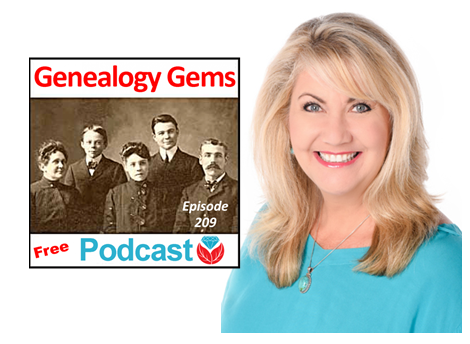
In today’s episode:
- David Ouimette of FamilySearch is known to his colleagues as “the Indiana Jones of genealogy” because of his globe-trotting adventures in curating record treasures. He joins us to talk about the millions of records being digitized around the world right now.
- Lots of excited emails from you!
- Compiled military service records from Military Minutes expert Michael Strauss
GENEALOGY GEMS EVENTS
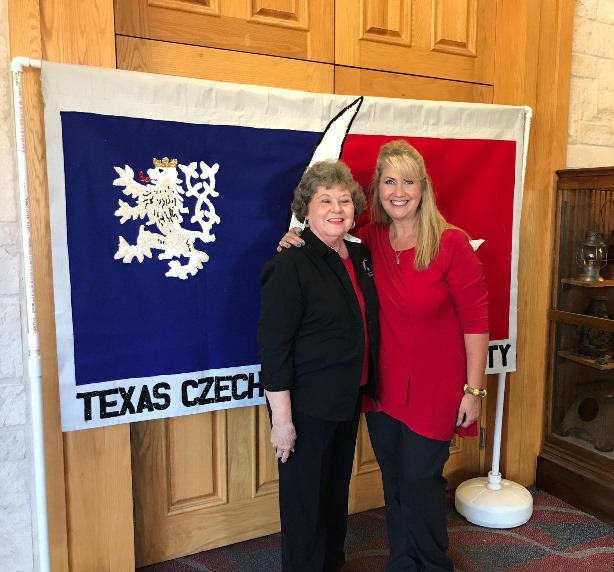
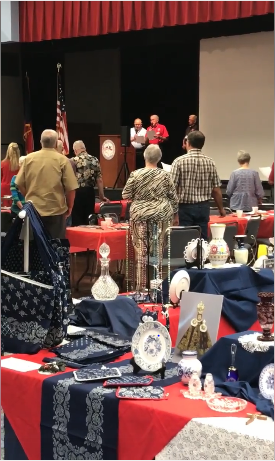
Thanks for a great seminar, Texas Czech Genealogical Society! (shown right: the beautiful items you see in the foreground are Czech crystal and other traditional items)
Jake’s Texas Tea House, Waco, TX
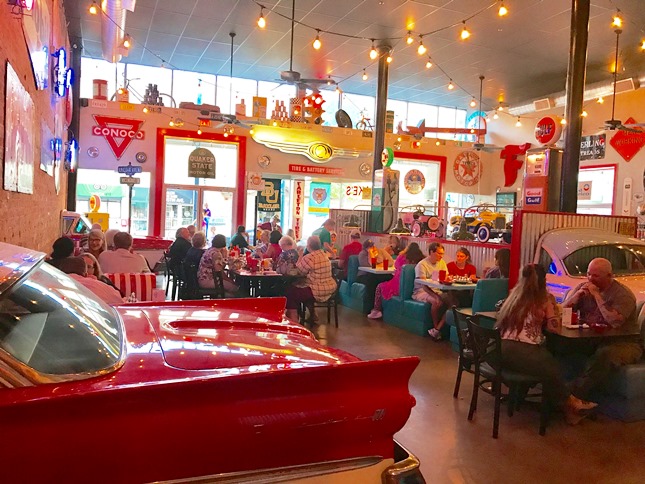
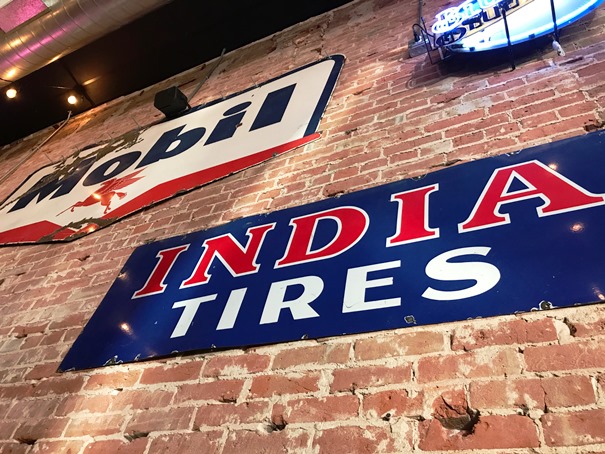
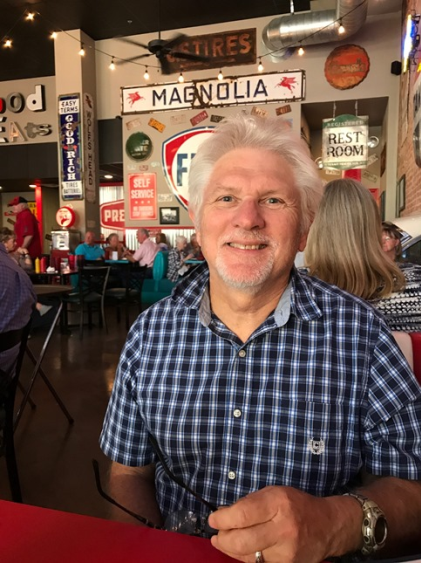
Bill at Jakes
NEWS: ROOTSMAGIC UPDATE

Free update for RootsMagic 7 users: version 7.5.4.0 (update primarily fixes bugs). Click on the “Update Available” indicator in the lower right corner of your RootsMagic 7 program screen.
If you don’t already have RootsMagic 7, click here to see what’s new Or click here to order the upgrade.
RootsMagic’s new TreeShare for Ancestry
Genealogy Gems Mailbox


Gray recommends Lisa’s free Family History: Genealogy Made Easy Podcast
MAILBOX: FREE WEBINAR RESPONSES
“Reveal Your Unique Story through DNA & Family History”
Click the image above to watch the video
Click the red SUBSCRIBE button on the Genealogy Gems YouTube channel.
NEW GENEALOGY GEMS PREMIUM VIDEO
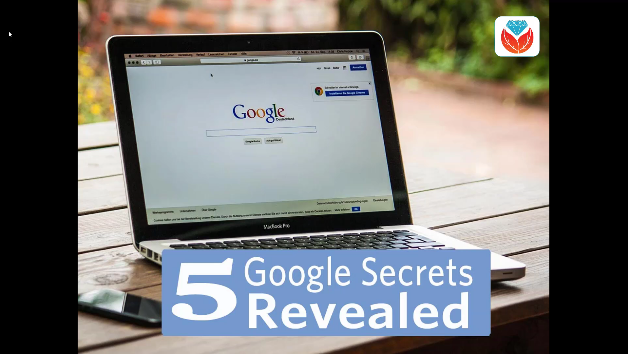
Develop your search superpowers to uncover information about your family history on the web with Google at lightning speed! Explore tools like Image search, facial recognition, finding specific types of files, how to find the answers you need, and more. Click here to watch a class preview; click here to become a Genealogy Gems Premium member.
BONUS CONTENT for Genealogy Gems App Users
If you’re listening through the Genealogy Gems app, your bonus content for this episode is an easy-to-access version of the new Genealogy Gems Premium video, “Google Search Secrets.” The Genealogy Gems app is FREE in Google Play and is only $2.99 for Windows, iPhone and iPad users.
INTERVIEW: DAVID OUIMETTE OF FAMILYSEARCH
David Ouimette, CG, manages Content Strategy at FamilySearch. He has conducted research and analyzed archival materials in dozens of countries in North and South America, Europe, Africa, and Asia. David lectures regularly and has written for genealogists, including Finding Your Irish Ancestors: A Beginner’s Guide.

Genealogy Gems Contributing Editor Sunny Morton is the author of “Genealogy Giants: Comparing the 4 Major Websites.” (discontinued) Use this jammed-packed cheat sheet to quickly and easily compare the most important features of the four biggest international genealogy records membership websites: Ancestry.com, FamilySearch.org, Findmypast.com and MyHeritage.com. Consult it every time your research budget, needs or goals change!
Start creating fabulous, irresistible videos about your family history with Animoto.com. You don’t need special video-editing skills: just drag and drop your photos and videos, pick a layout and music, add a little text and voila! You’ve got an awesome video! Try this out for yourself at Animoto.com. Use coupon code YEAR15 for 15% off annual plans through 12/31/17.
MyHeritage.com is the place to make connections with relatives overseas, particularly with those who may still live in your ancestral homeland. Click here to see what MyHeritage can do for you: it’s free to get started.
MILITARY MINUTES: COMPILED MILITARY SERVICE RECORDS

If a clue found in your ancestor’s US draft registration records listed military service you will want next to search for his Compiled Military Service Record (CMSR).
The Compiled Military Service Records (often abbreviated at CMSR or CSR) record the name, unit, and period of service of the veteran along with information related to military service from the Revolutionary War to the end of the hostilities of the Philippine Insurrection after the turn of the 20th century.
The information varies greatly from each of the war periods that recorded this information. Besides the identifying features listed above, they typically contain muster in/out information, rank in/out details and further highlight the soldier career by recording promotions, prisoner of war memorandums, casualties, and a number of personnel papers which may include enlistment papers and other related documents. Several of the war periods also provide physical descriptions of the soldiers including; name, age, nativity, occupation, height, hair, eyes, and complexion information. This set of records represents the volunteer Army and doesn’t include regular Army enlistments. Except for limited records of the Revolutionary War and the War of 1812 for the Navy, the other branches of the military (including Navy, Marines, and Revenue Cutter Service) all have their equivalent set of records.
Your ancestor may have multiple entries in the CMSR. This could occur if a soldier served in more than one unit, or in the case of John LeMaster, who enlisted in two different armies. The Civil War divided our nation, testing the loyalty of all persons who lived during this time. Lemaster chose the Confederacy (as least initially) when in 1861 in Charlestown, VA he enlisted with the 2nd VA Infantry fighting alongside of his Brigade commander Thomas J. Jackson who later would be known as “Stonewall Jackson.” (Photos: John H. Lemaster and his family in Martinsburg, WV. Photos courtesy of Michael Strauss.)
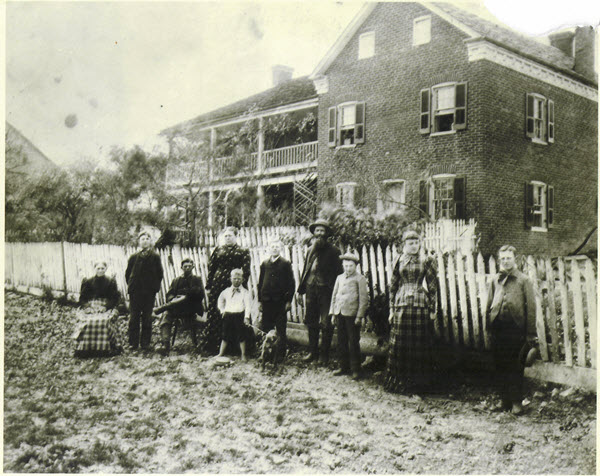
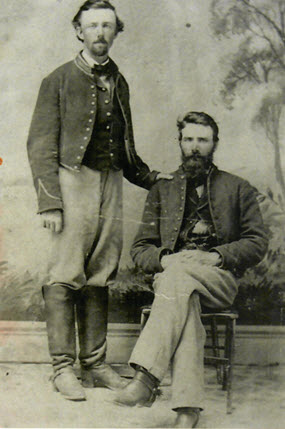
After the Confederate loss at the battle of Gettysburg he deserted and lived in Martinsburg in what was now West Virginia where on his Draft Registration he was listed as a deserter from the Rebel Army. In 1864 he enlisted in the United States Army with the 3rd WV Cavalry, serving out the duration of the war until 1865. After the war he was granted a federal pension, with no mention of his former service in the Confederacy.
Shown on following pages: his military service records for both the Confederate and Union armies.
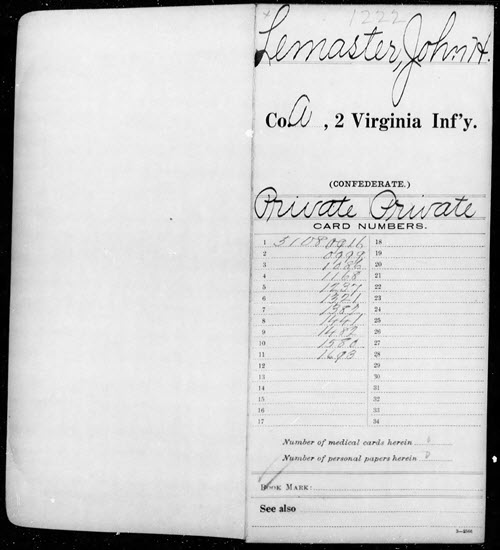
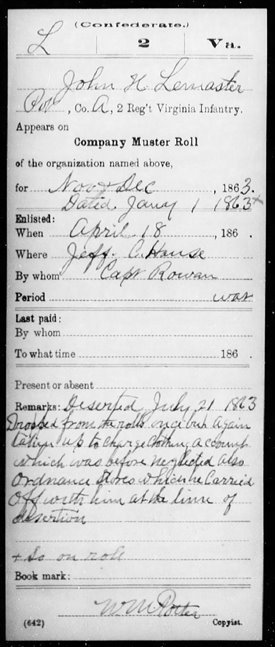
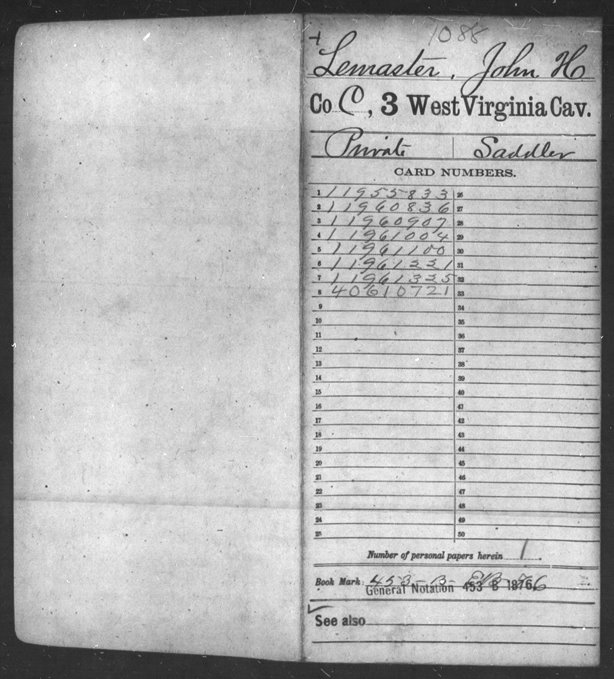
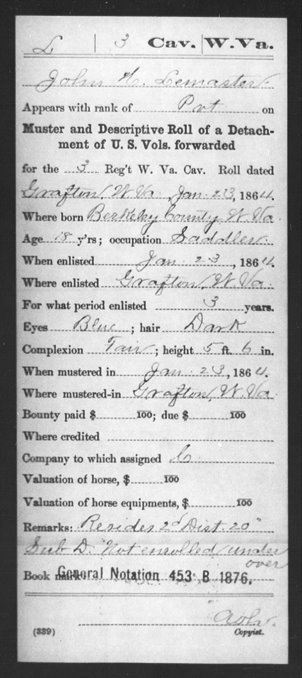
Access various CMSR indexes and images online at the following:
At fold3:
Revolutionary War. Compiled Military Service Record images are online for CT, DE, GA, MD, MA, NH, NJ, NY, NC, PA, RI, SC, VT, VA, and Continental Troops. Genealogists should also search the local state where their ancestors were from as some Militia isn’t included in these records.
During the Revolutionary War additional Compiled Service Records were completed for the Navy, which was broken down to include Naval Personnel, Quartermaster General, and Commissary General Departments.
One additional set of CMSR images covered Revolutionary War service along with Imprisonment Cards. Click here
Old Wars (1784-1811). After the Revolutionary War, the newly formed United States government sought to maintain a regular Army. However, volunteer soldiers who served from 1784-1811 were recorded. (One of the reasons for volunteers to be called up would have included the Whiskey Rebellion of 1793.) Their Compiled Military Service Record full images are available online here.
War of 1812. Compiled Military Service Records Indexes are online for CT, DE, DC, GA, IL, IN, KY, LA, MD, MA, MI, MS, MO, NH, NJ, NY, NC, OH, PA, RI, SC, TN, VT, VA and also the Cherokee, Chickasaw, Choctaw, Creek, and Shawanoe Indians along with United States Volunteers. Full copies of CMSR are online for the Chickasaw and Creek Indians, along with the men from Lake Erie and Mississippi.
Indian Wars. Compiled Military Service Records Indexes are online for the various Indians wars from 1815-1858.
Mexican War. Compiled Military Service Record indexes are online for AL, AR, CA, FL, GA, IL, IN, IA, KY, LA, MD, DC, MA, MI, MS, MO, NJ, NY, NC, OH, PA, SC, TN, TX, VA, WI, and the Mormon Battalion and the United States Volunteers. Full copies of the CMSR are online for AR, MS, PA, TN, TX, and the Mormon Battalion.
Civil War. Click here to search:
- Union: Indexes are online for AZ, CA, CO, CT, IL, IN, IA, KS, ME, MA, MI, MN, MO, NH, NJ, NY, OH, PA, RI, VT, WA, WI, United States Veteran Volunteers, and Veteran Reserve Corps. Full copies of CMSR for AL, AR, CA, CO, Dakota Territory, DE, DC, FL, GA, KY, LA, MD, MA, MS, MO, NE, NV, NM, NC, OR, TN, TX, UT, VT, VA, WV, United States Colored Troops, United States Volunteers, and 1st NY Engineers.
- Confederate: indexes are online for AL, and VA. Full copies of CMSR are online for AL, AZ, AK, FL, GA, KY, LA, MD, MO, MS, NC, SC, TN, TX, VA, Miscellaneous, Volunteers, Indians, and Officers.
Spanish American War. Compiled Military Service Record Indexes are online for AL, AR, CA, CO, CT, Dakota Territory, DE, DC, FL, GA, ID, IL, IN, IA, KS, KY, LA, ME, MD, MA, MI, MN, MS, MO, MT, NE, NV, NH, NJ, NY, NC, ND, OH, OK, OR, PA, PR, RI, SC, SD, TN, TX, UT, VT, VA, WA, WV, WI, WY, and United States Volunteers.
Full copies of CMSR are online for FL.
At Ancestry.com:
Revolutionary War. Full copies of the Compiled Military Service Records for CT, DE, GA, MD, MA, NH, NJ, NY, NC, PA, RI, SC, VT, VA, and Continental Troops. This database often doesn’t list the local militia as most of the men listed were part of the continental line. Researchers can access this group of records and search by keyword or location. Search here
Old Wars. This database is an index and full images of the Compiled Military Service Records of those men who served after the Revolutionary War and before the War of 1812, covering the years of 1784-1811.
War of 1812. Abstracted lists of names, state, and military units from the Compiled Service Records (no images). Search here
Indian Wars: Database with images for Florida: includes the Florida Wars, Second Creek War, and the Third Seminole War from 1835-1858
Mexican War. Full copies of the CMSR are online for MS, PA, TN, TX, and the Mormon Battalion. Search here
Civil War:
- Union:Compiled Military Service Records are searchable, with a link to the collection on Fold3 here
- Confederate: Compiled Military Service Records are searchable, with a link to Fold3 to view original images here. An additional set of Service Records comes from units that were raised by the Confederate Government and not from any of the states that comprised the Confederacy. The CMSR are available online to view the images and searchable by military unit here.
Spanish American War. Compiled Military Service Record Indexes are online that cover the same geographical areas as on Fold3 here. Full copies of CMSR are online on Ancestry for Florida here.
Free at FamilySearch.org:
Family Search has fewer Compiled Military Service Records available online that include images. One of the major collections includes the Revolutionary War CMSR’s that when searched here, the images provide a direct link to Fold3.
Most of the other major war periods are microfilmed and available through the Family History Library in Salt Lake City, Utah. With online access through both Fold3 and Ancestry provided on the computers in the library, accessing the film is less desirable.
GEM: USNEWSMAP
Free video helps you visualize where historic newspapers are located in the US
Suzanne’s comment: “Did you realize that this site from the Georgia Tech Research Institute is actually a wonderful search engine for Chronicling America.loc.gov. website? I have used the LOC site often, but found it cumbersome sometimes. This is a real time saver. Thanks for the Genealogy Gem.”
Lisa’s tip: In the timeline you can specify a date, like 1860 (date and month too!), then press play and it will play back and reveal the locations on mentions of your search query coming forward in time. It would be really interesting to take a word or phrase and see when it first occurred. This is a very feature-rich website!
PROFILE AMERICA: HOME MAKING
A short YouTube video documentary on Leavittown: it’s a great example of the do-it-yourself video narratives you can make to tell your own family’s stories!
KEEP UP WITH GENEALOGY GEMS
Listen to the Genealogy Gems Podcast twice a month! Check in on or after October 26, 2017 for Genealogy Gems Podcast Episode 210. What’s coming? Paul Woodbury of Legacy Tree Genealogists will share some great tips for beginning Swedish genealogy?and much more!
Follow Genealogy Gems on Instagram
Subscribe to the Genealogy Gems YouTube channel
Disclosure: This article contains affiliate links and Genealogy Gems will be compensated if you make a purchase after clicking on these links (at no additional cost to you). Thank you for supporting Genealogy Gems!
PRODUCTION CREDITS
Lisa Louise Cooke, Host and Producer
Sunny Morton, Editor
Diahan Southard, Your DNA Guide, Content Contributor
Vienna Thomas, Associate Producer
Hannah Fullerton, Production Assistant
Lacey Cooke, Service Manager




